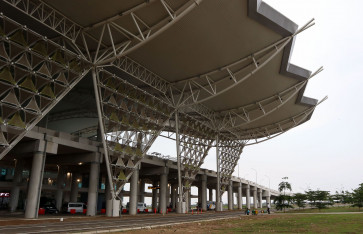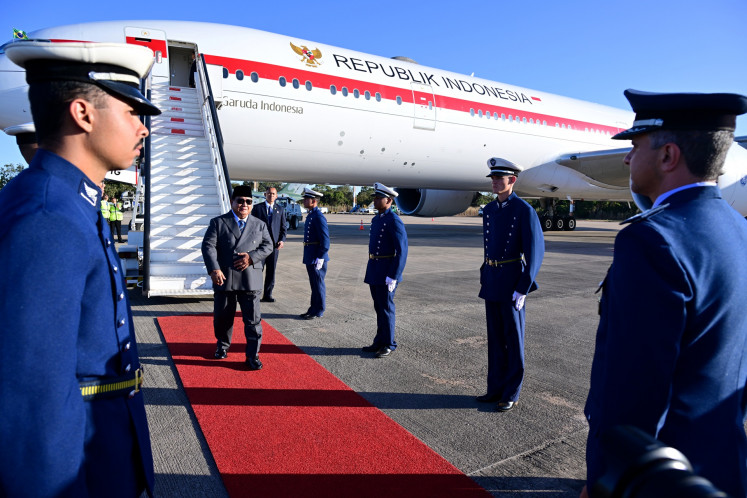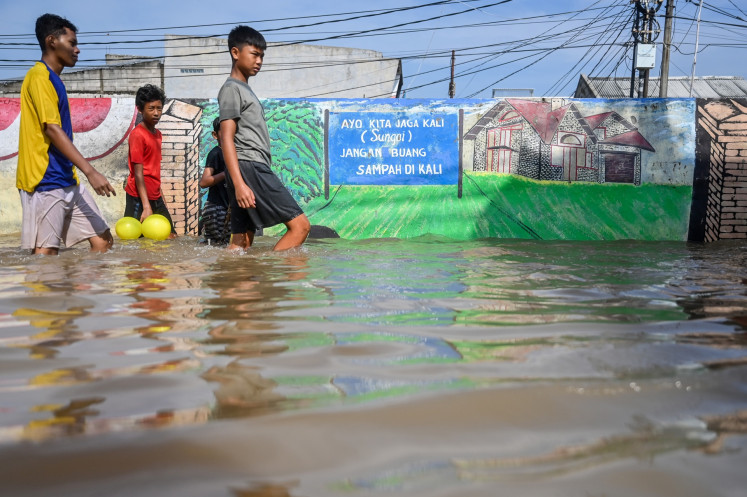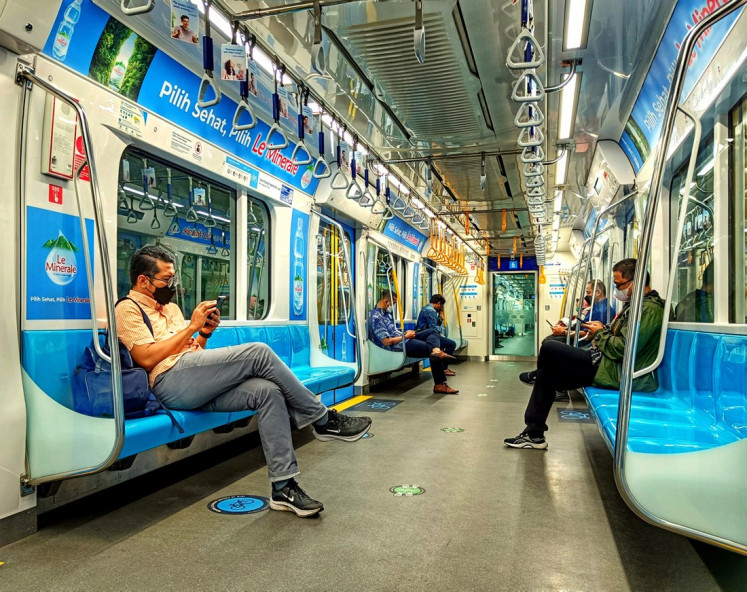Popular Reads
Top Results
Can't find what you're looking for?
View all search resultsPopular Reads
Top Results
Can't find what you're looking for?
View all search resultsBoosting tourism through clean toilets
Increased tourism starts with clean toilets
Change text size
Gift Premium Articles
to Anyone
I
ncreased tourism starts with clean toilets.
The 2011 World Toilet Summit in China last month ended with the revelation that the key to increasing tourist arrivals lies in the availability of clean and proper public toilets.
New: One example of clean and modern restroom design are these bathrooms in China. Courtesy of Naning Adiwoso
The participants at the 11th World Toilet Summit agreed that spectacular scenery and aggressive tourism campaigns were not enough to draw tourists, emphasizing that a country also needs to provide good public toilets in order to attract visitors.
A group of speakers from Huazhong University of Science and Technology concluded their presentation at the summit by noting that toilets are an indispensable service and serve as a key measure for improving tourist attractions and enhancing their charm.
With “Toilet Civilization: Health, Tourism, Quality of Life” this year’s theme, the summit gathered academicians, experts and authorities from all over the world at a Hainan Island resort to learn about the importance of providing clean toilets in tourist areas as a way to promote tourism.
A good example comes from the host country.
China, listed as the country with the worst toilets in Asia for years according to the World Toilet Organization (WTO), has progressed significantly in the conditions of its public restrooms.
Clean: The World Toilet Summit discussed how countries need to provide good public toilets in order to attract tourists. Courtesy of Ibu Naning Adiwoso
As part of its campaign to promote tourism, the Chinese government has allocated a large budget for the construction of high quality public toilets.
With these funds prioritized, the local government of Hainan spent millions of yuan to accelerate the construction of high quality public toilets in China’s most famous resort, dubbed the “Hawaii of the Orient”.
Haikou, the capital city of Hainan province, reported last year it invested nearly 40 million yuan (US$6.28 million) until 2012 to build more than 200 public toilets.
This investment is part of the Chinese government’s attempts to lure more visitors to the country, which became the third most visited nation in the world in 2010, behind France and the US.
Data from the United Nations World Tourism Organization recorded a 10 percent increase in international arrivals in China, climbing to a total of 55.98 million visitors last year.
But what about Indonesia?
Indonesia is lagging behind other nations in terms of improving its public toilet facilities and is currently ranked third on the World Toilet Organization’s list of nations with the worst public toilets in Asia, behind India and China.
The founder of the Indonesian Toilet Association (ITA), Naning Adiwoso, said Indonesia only showed a slight improvement in the procurement of public toilets the past 10 years.
“We saw changes at several airports as well as at certain malls in the capital, but we need more than that,” said Naning, who attended the Hainan summit.
Naning sees huge potential for growth in Indonesia tourism if the government cared enough to rehabilitate public toilets in tourist areas.
Indonesia, a beautiful archipelago with diverse sites for tourism, from majestic mountains to spectacular undersea views, attracted only 7 million foreign visitors last year who contributed about $7 billion to the economy, according to data from the Central Statistics Agency.
Tourism figures for Indonesia, however, are dwarfed by China, which took in $45.8 billion in tourist spending in 2010.
“When tourist attractions are furnished with good tourist toilets they will attract more tourists, who in turn will bring more wealth to local economies, create new jobs and improve the investment climate,” Naning said.
Yet, the Indonesian government has paid little attention to the matter. The absence of a single government representative at the World Toilet Summit is indicative of the ignorance that has contributed to the deteriorating condition of public toilets in the country.
Apart from a lack of government support, Indonesia faces challenges from individuals who still practice unhealthy habits in public toilets.
Teguh Pratomo, the head of the service and operation division at Juanda International Airport in Surabaya, East Java, said the biggest challenge for the airport’s management in toilet maintenance was dealing with people’s lack of knowledge as to how to use public facilities properly.
“The rise of low cost airlines has brought people from lower economic classes who are not familiar with using a public toilet at the airport,” Teguh said, adding that those people made toilet maintenance more challenging.
Yet, Juanda Airport overcame the challenges it faced as it has won the award for the airport with the best toilet facilities two years in a row from the Tourism Ministry.
“We operate under established systems that ensure the service quality of the public toilets in our airport,” Teguh said.
Juanda Airport is also preparing to add more toilets in conjunction with the airport’s expansion, set to be completed by next year.
Under the plan, Juanda will more than double its capacity from 6 million to 11 million passengers per year.
Modern: This hygienic space for hand washing is a good example for countries that want to attract tourists. JP/Ika Krismantari
Similar efforts are under way at Soekarno-Hatta International Airport in Jakarta. The airport operator, Angkasa Pura, plans to expand the airport’s service capacity from 45 million to 62 million passengers per year and to construct additional restroom facilities in anticipation of an increase in the number of visitors over the next two years.
Angkasa Pura deputy senior manager Mulya Abdi said management would also install sensor-based technology in the airport’s restrooms that would allow visitors to use the facilities without needing to touch things like toilet handles or faucets.
“We want to meet the world-class standard,” Mulya said.
The problem is Indonesia doesn’t need only fancy and clean toilets inside its airports but also in surrounding tourist areas.
“I hope the government pays attention to this problem because toilets are where many tourists get their first impression. Like it or not, toilets represent the face of our country,” Mulya said.
Recognizing the urgency of the matter, Naning suggested the development of ministerial partnerships to restore Indonesia’s tarnished image in the provision of public toilets.
But as we know, awaiting the government action is like waiting for Godot.
Therefore, Naning and the ITA have launched an initiative — without government assistance — to produce a series of public service announcements to disseminate information on toilets to the general public.
“We need action [from the government]. If Indonesia doesn’t think about this, it will lose tourists who are also looking for comfort,” Naning said.
So, without the necessary improvements to public toilets, the Indonesian government risks flushing millions of tourist dollars down those toilets.












